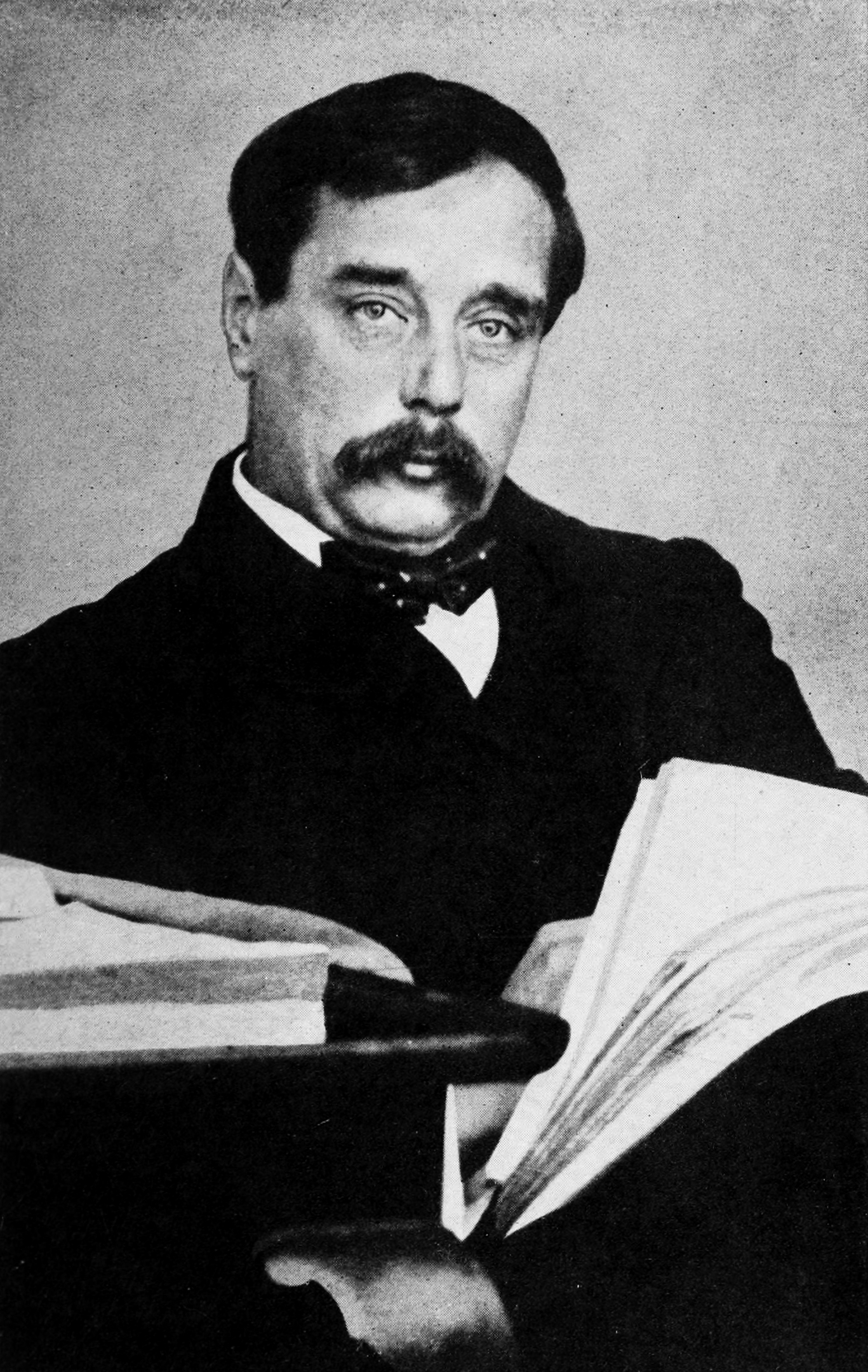“The Land Ironclads” is a short story by the English author H. G. Wells (1866–1946) first published in The Strand MagazineMonthly publication founded by George Newnes, published 1891–1950, credited with introducing the short story to a British audience. in December 1903. Told as a third-person narrative, it contains a “striking anticipation” of the impact of the tank in a tale of trench warfare predating the First Word War.[1]
Synopsis
The story opens with an unnamed war correspondent and a young lieutenant surveying the calm of the battlefield and reflecting upon the war between two unidentified armies. The opponents are dug into opposing trenches, each waiting for the other to attack, and the men on the war correspondent’s side are confident they will prevail, because they are all strong outdoor-types – men who know how to use a rifle and fight – while their enemies are townspeople, “a crowd of devitalised townsmen … They’re clerks, they’re factory hands, they’re students, they’re civilised men. They can write, they can talk, they can make and do all sorts of things, but they’re poor amateurs at war.”[2] The men agree that their “open air life” produces men better suited to war than their opponents’ “decent civilisation.”[3]
During the night, a month after the stalemate began, dark and menacing shapes with blazing searchlights emerge from the attacking force’s lines, the ironclads of the title, bearing down on the defenders. Their armour is impervious to the defender’s rifle fire, and by daylight they are so close to their opponent’s trenches that artillery cannot be brought to bear upon them. The mobility of the ironclads also makes it very difficult for the big guns to be used against them. The first line of trenches is quickly taken, and the defenders are forced back. One ironclad is put out of action, but the others press on, and by early afternoon the defenders are forced to surrender.
So in the end the “decent civilization,” with its men of science and engineers, triumphs over the “better soldiers” who, instead of developing land ironclads of their own, had been practising shooting their rifles from horseback, a tactic rendered obsolete by the land ironclads. Wells foreshadows this eventual outcome in the conversation of the two men in the first part, when the correspondent tells the lieutenant “Civilization has science, you know, it invented and it made the rifles and guns and things you use.”[3]
Commentary
The military historian J. P. Harris has described “The Land Ironclads” as one of Well’s “most prescient tales”,[4] but with the benefit of hindsight containing some “odd insights”.[5]
The ironclads are described as being about 80 to 100 feet (24 to 30 m) long, propelled by eight pairs of pedrail wheelsType of all-terrain wheel developed in the late 19th and early 20th centuries by Bramah Joseph Diplock., each about 10 feet (3 m) in diameter. The size “appears excessive … and the structure somewhat bizarre”, but what is perhaps even more surprising is that they are steam-powered,[6] despite Gottlieb Daimler’s invention of the internal combustion engine in 1883. The ironclad’s chief armament is remotely controlled semi-automatic rifles protruding from port holes in the sides, a technology that seems “over-elaborate and inappropriate for the task of shooting men densely packed in trenches”, especially given that in 1902 Frederick Simms had demonstrated a “motor war car” at Crystal Palace, featuring Maxim guns in rotating turrets.[7]
See also
- H. G. Wells bibliographyList of publications written by H. G. Wells during the more than fifty years of his literary career.
External links
- Full text of “The Land Ironclads” at Wikisource

